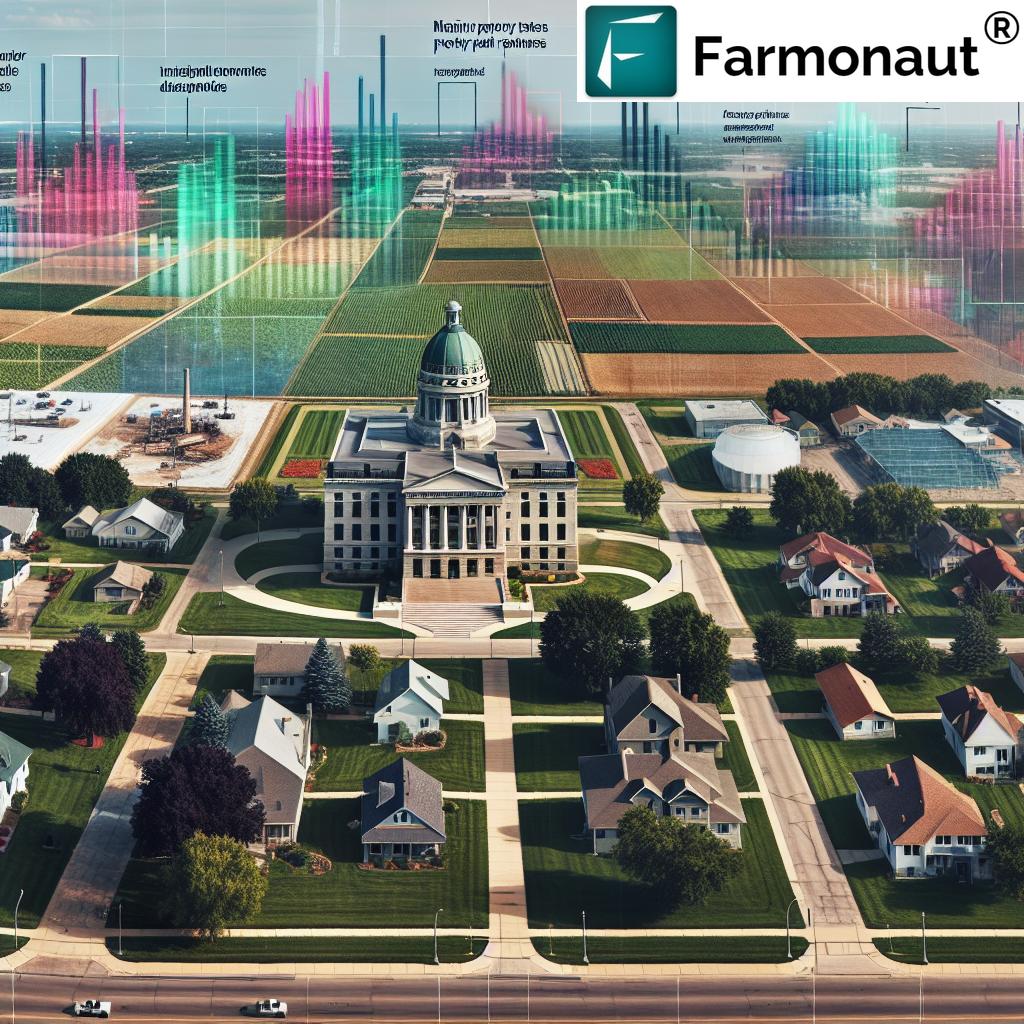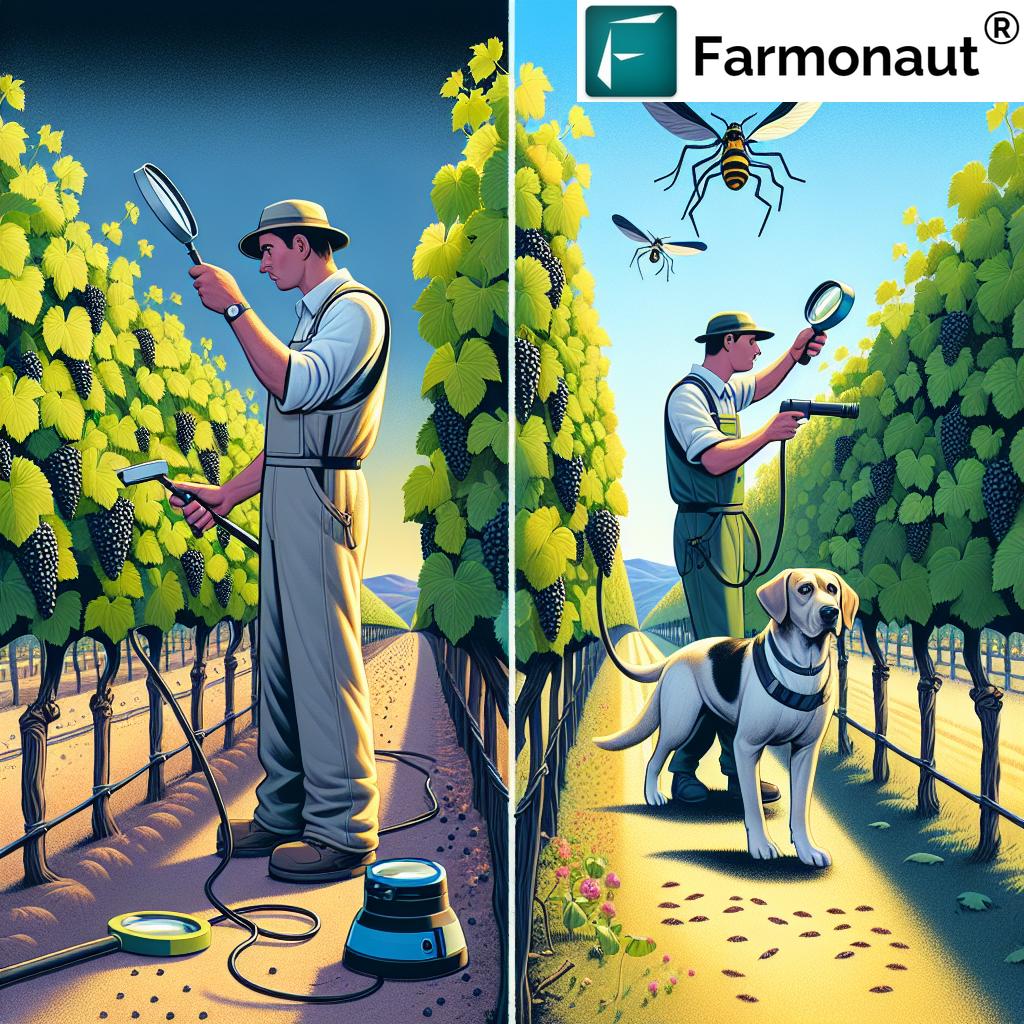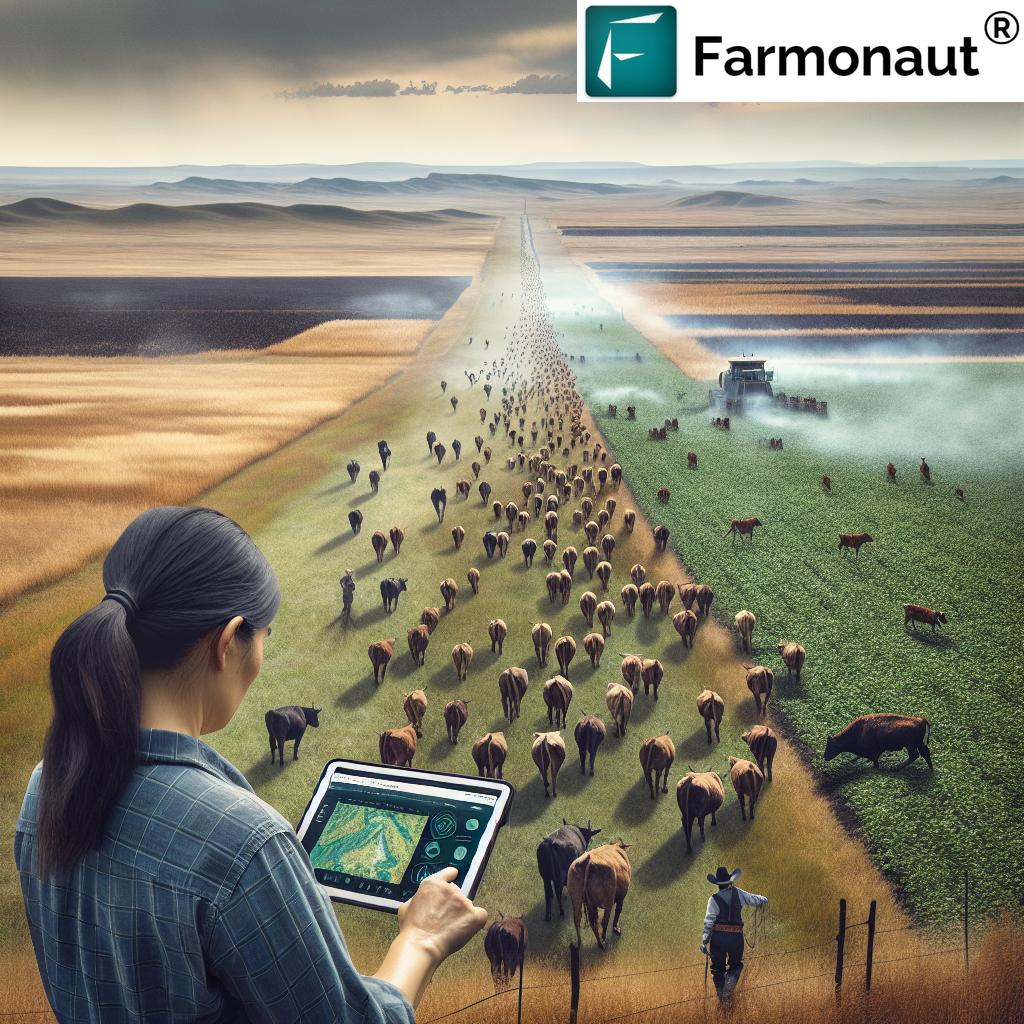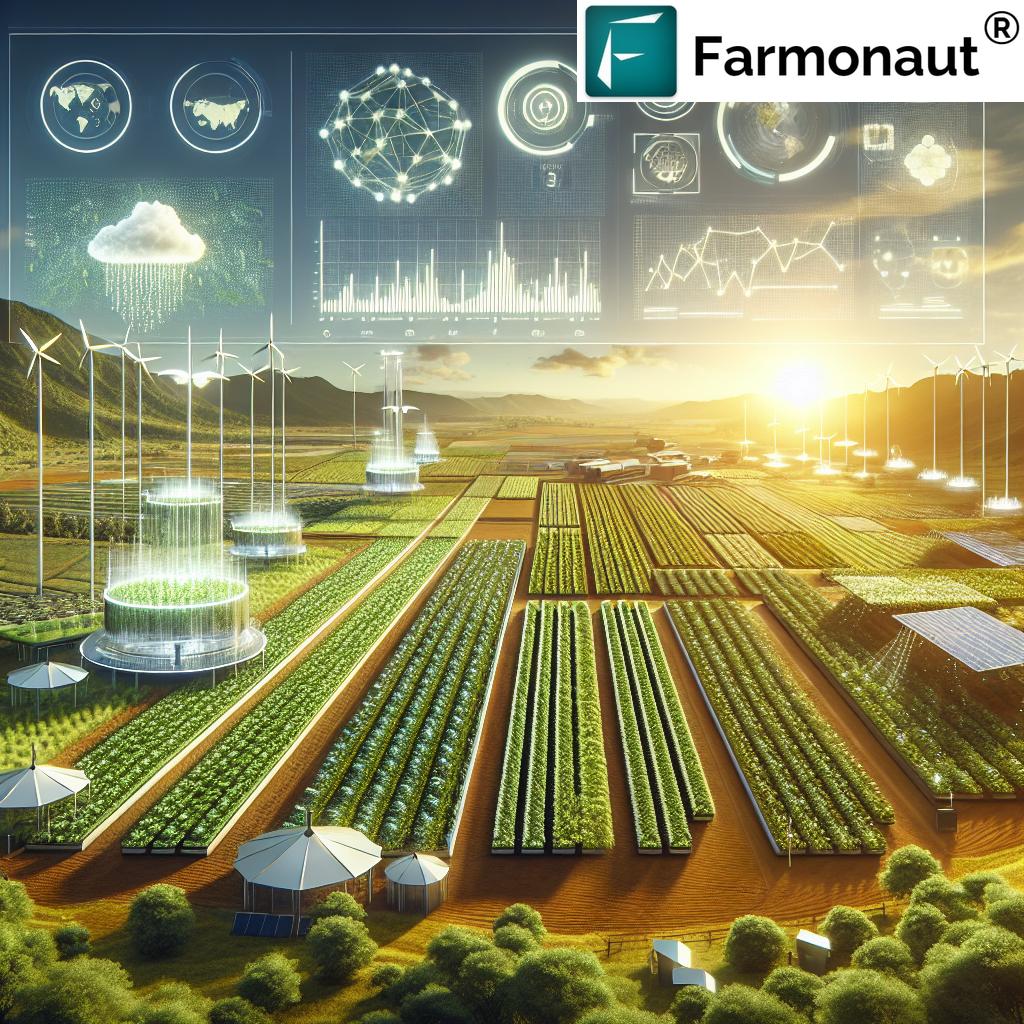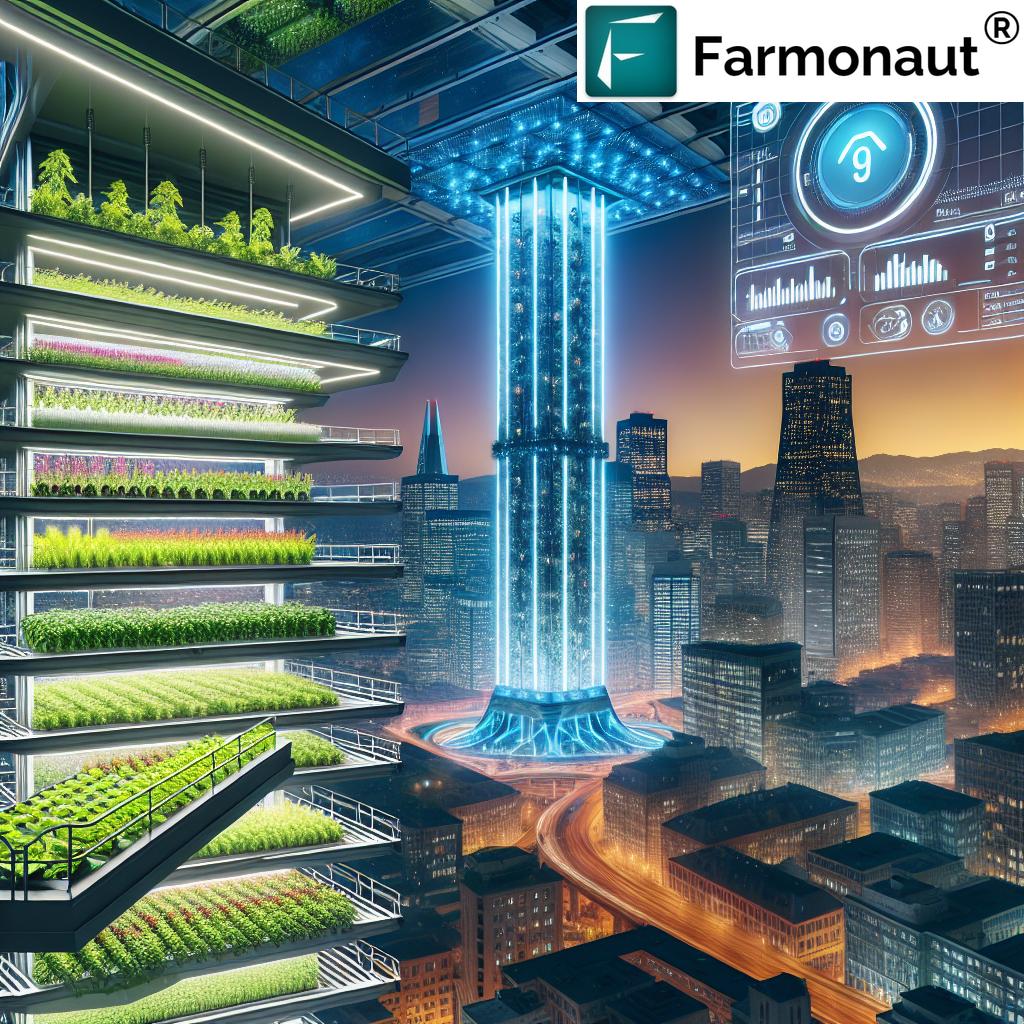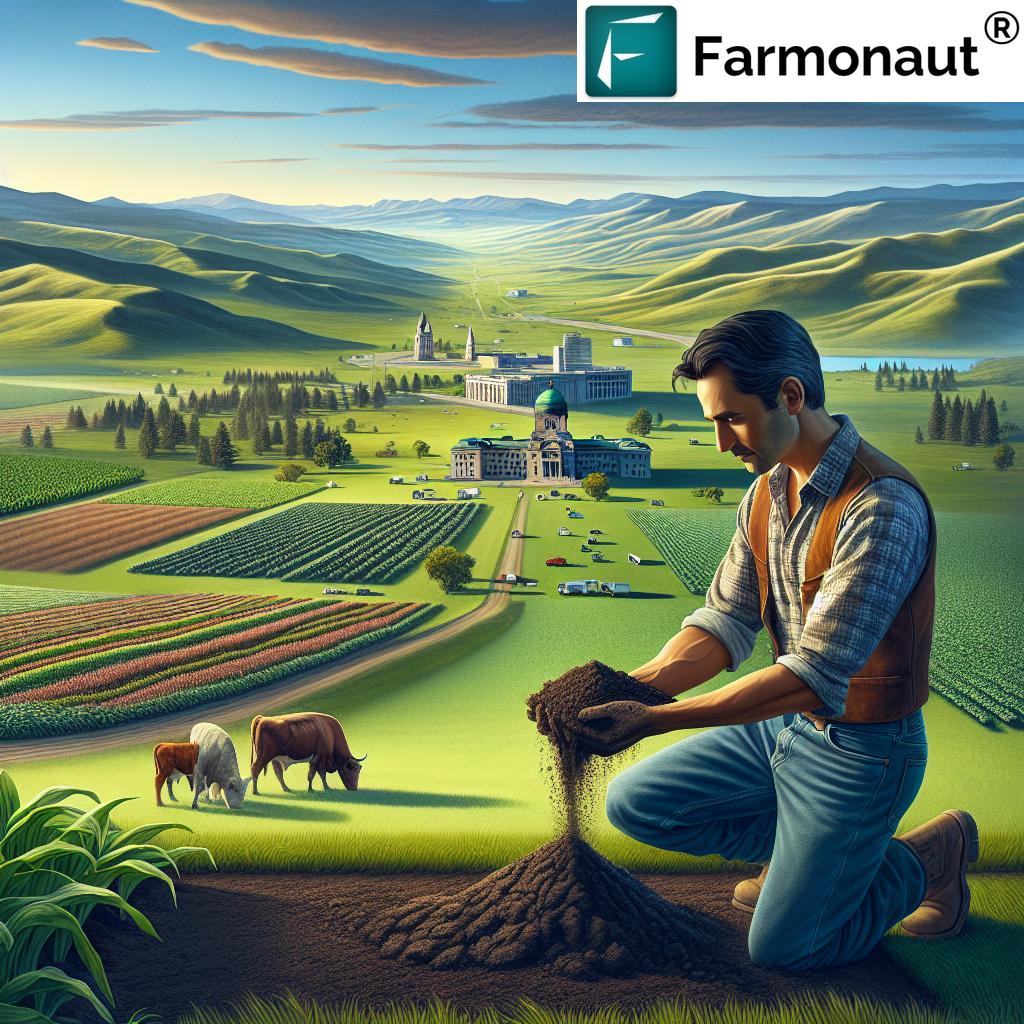Revolutionizing Sustainable Agriculture: New Jersey’s Breakthrough in Controlled Environment Farming
In the heart of New Jersey, a quiet revolution is taking place that promises to transform the landscape of sustainable agriculture. As we delve into the world of Controlled Environment Agriculture (CEA), we uncover how innovative companies like Edible Garden AG Incorporated are reshaping the future of food production. This blog post explores the cutting-edge developments in vertical farming technology, greenhouse growing systems, and the burgeoning sustainable food market that’s captivating consumers from the bustling streets of Belvidere to the shores of the Caribbean and beyond.
“Vertical farming can produce up to 350 times more crops per acre than traditional farming methods.”
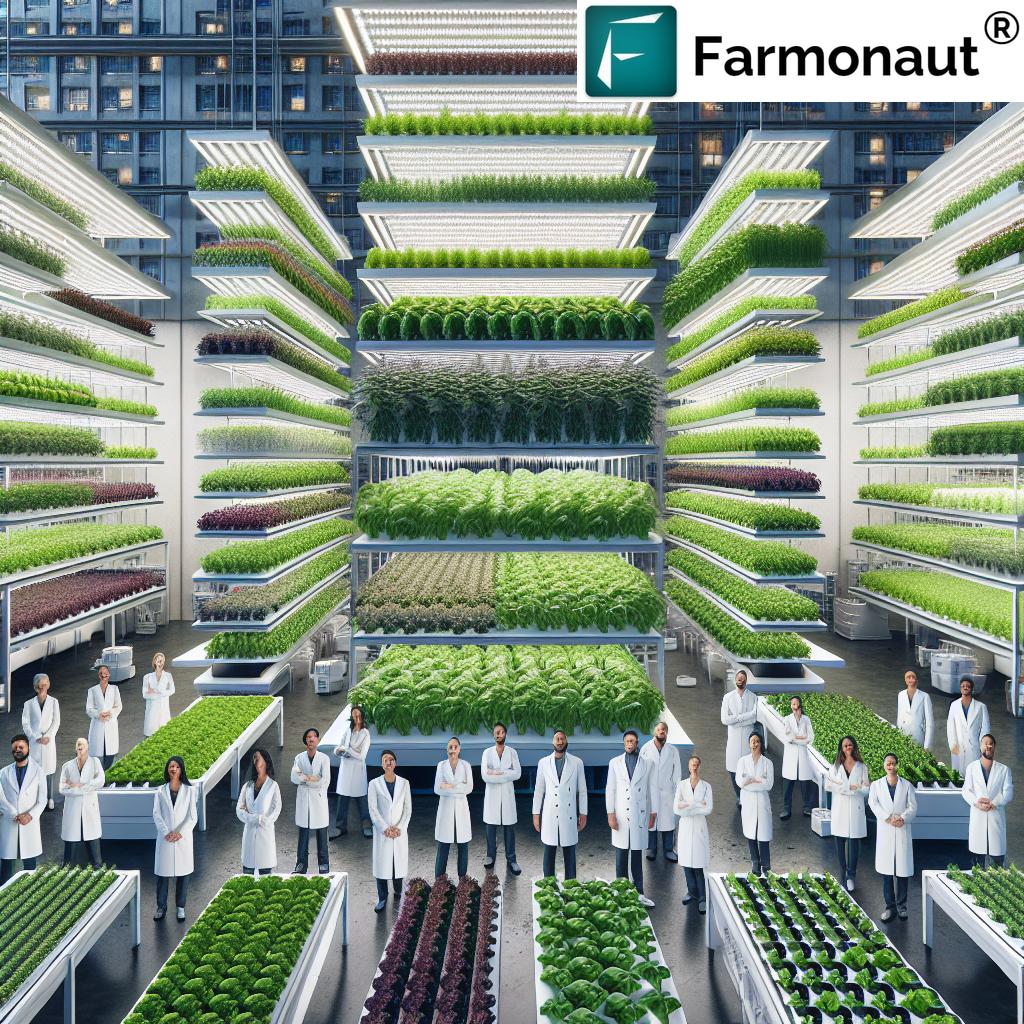
The Rise of Controlled Environment Agriculture
Controlled Environment Agriculture (CEA) is at the forefront of sustainable farming practices, offering solutions to many of the challenges faced by traditional agriculture. By creating optimal growing conditions indoors, CEA allows for year-round production, reduced water usage, and minimal pesticide application. This innovative approach to farming is particularly crucial in regions like New Jersey, where land is at a premium and the demand for fresh, locally grown produce is high.
At Edible Garden AG Incorporated, we’ve embraced CEA technology to revolutionize how we grow and distribute organic, sustainable produce. Our state-of-the-art facilities in Belvidere, New Jersey, and Grand Rapids, Michigan, showcase the potential of vertical farming and advanced greenhouse systems. These methods not only increase crop yields but also significantly reduce the environmental impact of food production.
Vertical Farming: Stacking Up Success
Vertical farming is a cornerstone of our CEA strategy at Edible Garden. This innovative technique allows us to grow crops in vertically stacked layers, maximizing space efficiency and reducing land use. Our vertical farming systems utilize hydroponic or aeroponic growing methods, which can save up to 95% more water compared to traditional farming techniques.
The benefits of vertical farming extend beyond resource conservation. By growing crops in a controlled indoor environment, we can:
- Produce fresh vegetables year-round, regardless of outdoor weather conditions
- Significantly reduce the need for pesticides and herbicides
- Minimize transportation costs and carbon emissions by growing closer to urban centers
- Ensure consistent quality and yield of crops
Our vertical farming operations are a testament to the power of innovation in agriculture. By leveraging these advanced techniques, we’re able to meet the growing demand for fresh, locally grown produce while minimizing our environmental footprint.
Greenhouse Growing Systems: Cultivating Sustainability
In addition to vertical farming, our greenhouse growing systems play a crucial role in our sustainable agriculture efforts. These advanced greenhouses utilize cutting-edge technology to create optimal growing conditions for a wide variety of crops. Our greenhouses are equipped with:
- Automated climate control systems
- LED lighting for energy-efficient supplemental lighting
- Precision irrigation and nutrient delivery systems
- CO2 enrichment for enhanced plant growth
By combining these technologies, we’re able to produce high-quality, organic crops with minimal environmental impact. Our greenhouse systems allow us to extend growing seasons, increase crop yields, and maintain consistent production throughout the year.
“Controlled Environment Agriculture reduces water usage by up to 95% compared to conventional farming techniques.”
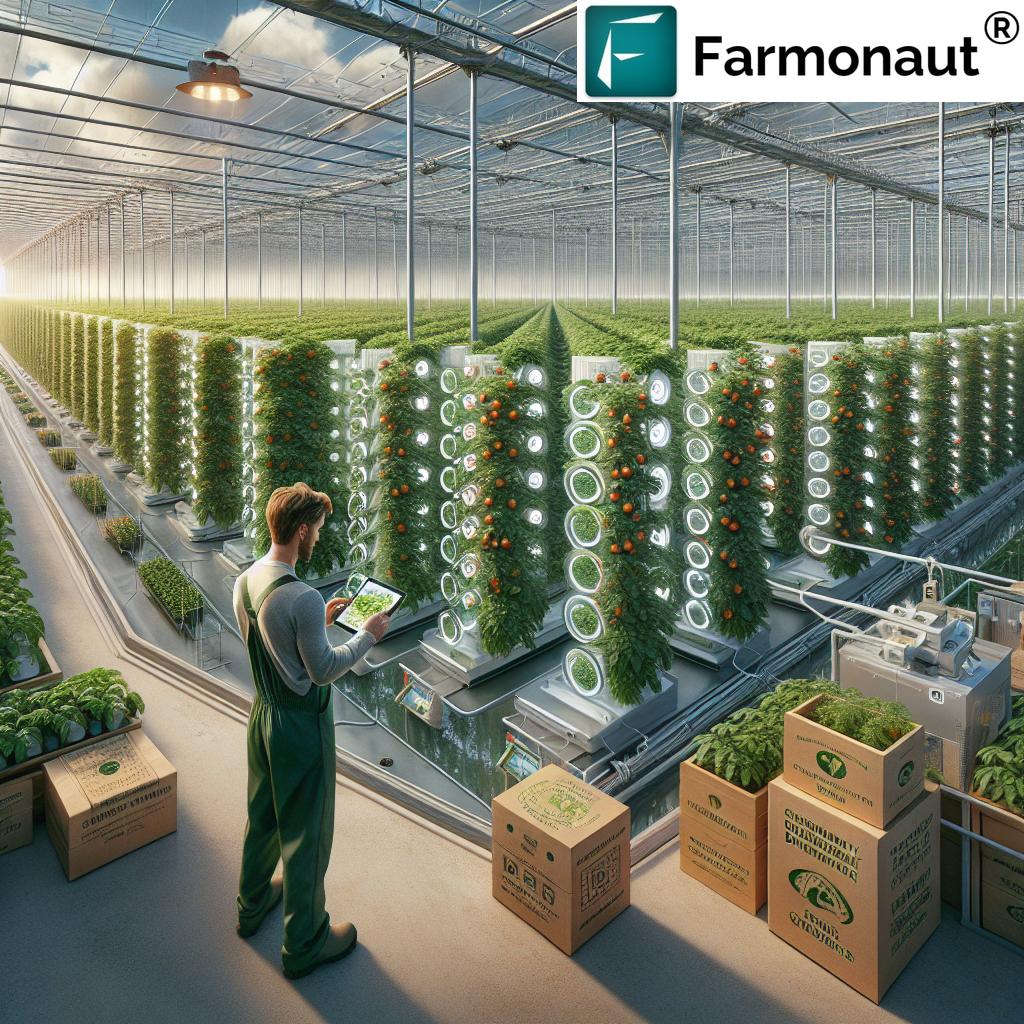
The GreenThumb Advantage: Optimizing Crop Monitoring and Growth
At the heart of our CEA operations lies our proprietary GreenThumb 2.0 software. This patented technology (US Nos.: US 11,158,006 B1, US 11,410,249 B2 and US 11,830, 088 B2) is a game-changer in the world of agricultural management. GreenThumb 2.0 optimizes growing conditions in both vertical farms and traditional greenhouses, while also seeking to reduce pollution-generating food miles.
Key features of GreenThumb 2.0 include:
- Real-time monitoring of plant health and growth metrics
- Automated adjustment of environmental parameters for optimal growth
- Predictive analytics for harvest timing and yield estimation
- Integration with our supply chain management systems for efficient distribution
By leveraging this advanced software, we’re able to maximize crop yields, minimize resource usage, and ensure consistent quality across all our products. The GreenThumb 2.0 system is a prime example of how technology is revolutionizing sustainable agriculture.
Sustainable Packaging: Enhancing Freshness and Reducing Waste
Our commitment to sustainability extends beyond the growing process. We’ve invested heavily in sustainable packaging solutions that not only protect our products during distribution but also help extend their shelf life. Our innovative packaging includes:
- Biodegradable and compostable materials
- Recycled and recyclable plastics
- Patented Self-Watering displays (U.S. Patent No. D1,010,365) for in-store freshness
These packaging innovations play a crucial role in reducing food waste and enhancing the overall sustainability of our supply chain. By extending the shelf life of our products, we’re able to minimize spoilage and ensure that more of our fresh, organic produce reaches consumers’ tables.
Expanding the Sustainable Food Market
The demand for sustainable, locally grown, organic produce continues to rise, and Edible Garden is well-positioned to meet this growing market need. Our products are now available in over 5,000 stores across the United States, Caribbean, and South America, demonstrating the broad appeal of our sustainable approach to agriculture.
To further capitalize on this expanding market, we’re focusing on several key strategies:
- Diversifying our product range to include value-added items like our Pulp fermented gourmet sauces and Vitamin Way® protein powders
- Expanding our distribution network to reach new markets
- Investing in marketing and education to raise awareness about the benefits of CEA and sustainable produce
- Collaborating with retailers to create custom growing programs that meet specific regional demands
By implementing these strategies, we aim to not only grow our market share but also to drive the overall expansion of the sustainable food market.
The Impact of CEA on Plant-Based Nutrition
As the world increasingly turns to plant-based diets for health and environmental reasons, CEA plays a crucial role in meeting this growing demand. Our controlled environment growing methods allow us to produce nutrient-dense crops with consistent quality year-round. This reliability is essential for consumers looking to incorporate more plant-based options into their diets.
Some of the ways CEA enhances plant-based nutrition include:
- Optimizing growing conditions to maximize nutrient content in crops
- Reducing the time between harvest and consumption, preserving nutritional value
- Enabling the cultivation of a diverse range of crops, even in non-native climates
- Producing cleaner, pesticide-free produce that aligns with health-conscious consumers’ preferences
By leveraging CEA technologies, we’re not just growing food; we’re cultivating a healthier, more sustainable future for plant-based nutrition.
Innovating for the Future: Research and Development
At Edible Garden, we understand that continuous innovation is key to maintaining our leadership position in the CEA industry. Our research and development efforts focus on several critical areas:
- Enhancing crop genetics for improved flavor, nutrition, and yield
- Developing new growing techniques to further increase efficiency and sustainability
- Exploring novel crops that can be successfully grown in CEA environments
- Improving automation and AI integration in our growing systems
These R&D initiatives ensure that we remain at the forefront of sustainable agriculture technology, continually improving our products and processes to meet the evolving needs of consumers and the planet.
The Role of Technology in Sustainable Farming
Technology is the driving force behind the revolution in sustainable agriculture. At Edible Garden, we leverage a range of cutting-edge technologies to optimize our growing processes and enhance the sustainability of our operations. Some of the key technologies we employ include:
- IoT sensors for real-time monitoring of growing conditions
- AI and machine learning algorithms for predictive maintenance and crop management
- Robotics and automation for efficient harvesting and processing
- Blockchain technology for enhanced traceability and supply chain transparency
These technologies not only improve our operational efficiency but also contribute to the overall sustainability of our farming practices. By reducing resource usage, minimizing waste, and optimizing crop yields, we’re able to produce more food with less environmental impact.
Comparative Analysis: CEA vs. Traditional Farming
| Farming Method | Water Usage Efficiency | Land Use Efficiency | Energy Consumption | Crop Yield | Pesticide Use | Food Miles | Shelf Life of Produce |
|---|---|---|---|---|---|---|---|
| Vertical Farming (CEA) | 95% reduction | 350 crops/acre | 40 kWh/kg | 50-100 kg/m²/year | 0-0.1 kg/hectare | 0-50 miles | 14-21 days |
| Greenhouse Systems (CEA) | 70% reduction | 100 crops/acre | 20 kWh/kg | 30-60 kg/m²/year | 0.5-1 kg/hectare | 50-200 miles | 10-14 days |
| Traditional Open-Field Farming | Baseline | 1 crop/acre | 5 kWh/kg | 2-5 kg/m²/year | 5-10 kg/hectare | 1500+ miles | 3-7 days |
This comparison clearly illustrates the advantages of CEA technologies in terms of resource efficiency, productivity, and sustainability. While traditional farming still has its place, CEA offers significant benefits, particularly in areas where land and water resources are scarce.
The Future of Sustainable Agriculture
As we look to the future, it’s clear that sustainable agriculture will play an increasingly important role in feeding the world’s growing population while minimizing environmental impact. At Edible Garden, we’re committed to leading this charge, continually innovating and expanding our sustainable farming practices.
Some of the trends we anticipate shaping the future of sustainable agriculture include:
- Increased adoption of CEA technologies in urban and peri-urban areas
- Greater integration of AI and machine learning in farming operations
- Development of new crop varieties specifically optimized for CEA environments
- Expansion of sustainable agriculture practices to address food security issues globally
- Growing consumer demand for transparent, sustainably produced food
By staying at the forefront of these trends, we aim to continue revolutionizing the agriculture industry and providing consumers with the fresh, sustainable produce they demand.
Conclusion: Growing a Sustainable Future
The breakthrough in Controlled Environment Agriculture that we’re witnessing in New Jersey and beyond represents a significant step forward in sustainable food production. At Edible Garden, we’re proud to be at the forefront of this revolution, leveraging innovative technologies and sustainable practices to produce high-quality, organic produce while minimizing our environmental impact.
As we continue to expand our operations and refine our techniques, we remain committed to our mission of providing fresh, locally grown, sustainable produce to consumers across the Americas. Through our dedication to innovation, sustainability, and quality, we’re not just growing food – we’re cultivating a better future for agriculture and for our planet.
FAQs
- What is Controlled Environment Agriculture (CEA)?
CEA is a technology-based approach to food production that creates optimal growing conditions for crops in enclosed environments, allowing for year-round cultivation and efficient resource use. - How does vertical farming differ from traditional farming?
Vertical farming grows crops in stacked layers, often indoors, using hydroponic or aeroponic systems. This method uses significantly less land and water compared to traditional farming. - What are the benefits of locally grown, organic produce?
Locally grown, organic produce often has higher nutritional value, better taste, and a smaller environmental footprint due to reduced transportation and chemical use. - How does Edible Garden ensure the sustainability of its products?
We use CEA technologies, sustainable packaging, and efficient distribution networks to minimize our environmental impact while producing high-quality organic produce. - What is the GreenThumb 2.0 software?
GreenThumb 2.0 is our proprietary, patented software that optimizes growing conditions in our vertical farms and greenhouses, enhancing crop yields and quality.
For more information on how technology is revolutionizing agriculture, check out Farmonaut’s innovative solutions for carbon footprinting in agriculture. This tool helps farmers and agribusinesses track and reduce their carbon emissions, contributing to more sustainable farming practices.
Additionally, Farmonaut’s product traceability solutions offer valuable insights for ensuring transparency in agricultural supply chains, aligning perfectly with the growing consumer demand for information about their food’s journey from farm to table.
Explore Farmonaut’s comprehensive suite of agricultural technology solutions:
Earn With Farmonaut: Affiliate Program
Earn 20% recurring commission with Farmonaut’s affiliate program by sharing your promo code and helping farmers save 10%. Onboard 10 Elite farmers monthly to earn a minimum of $148,000 annually—start now and grow your income!






